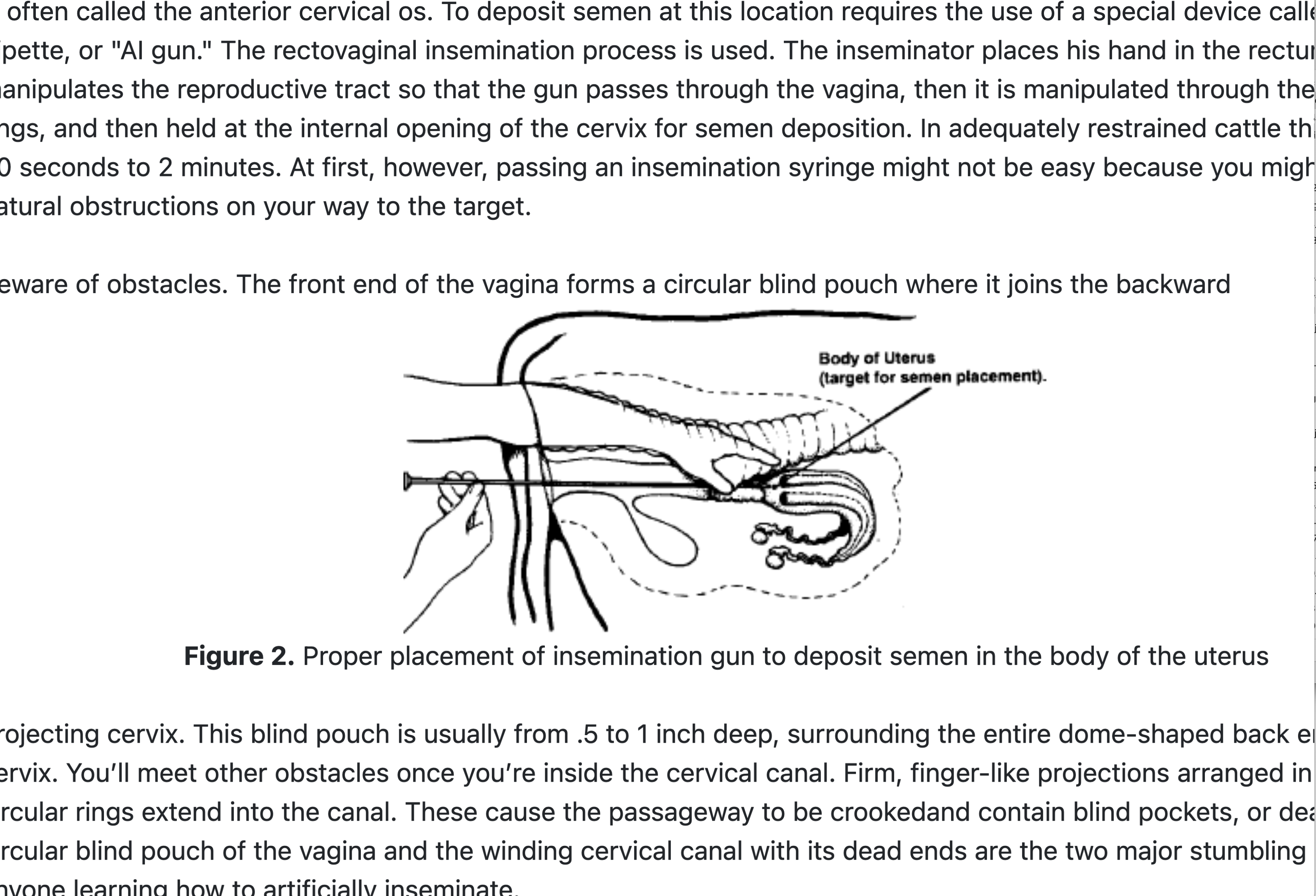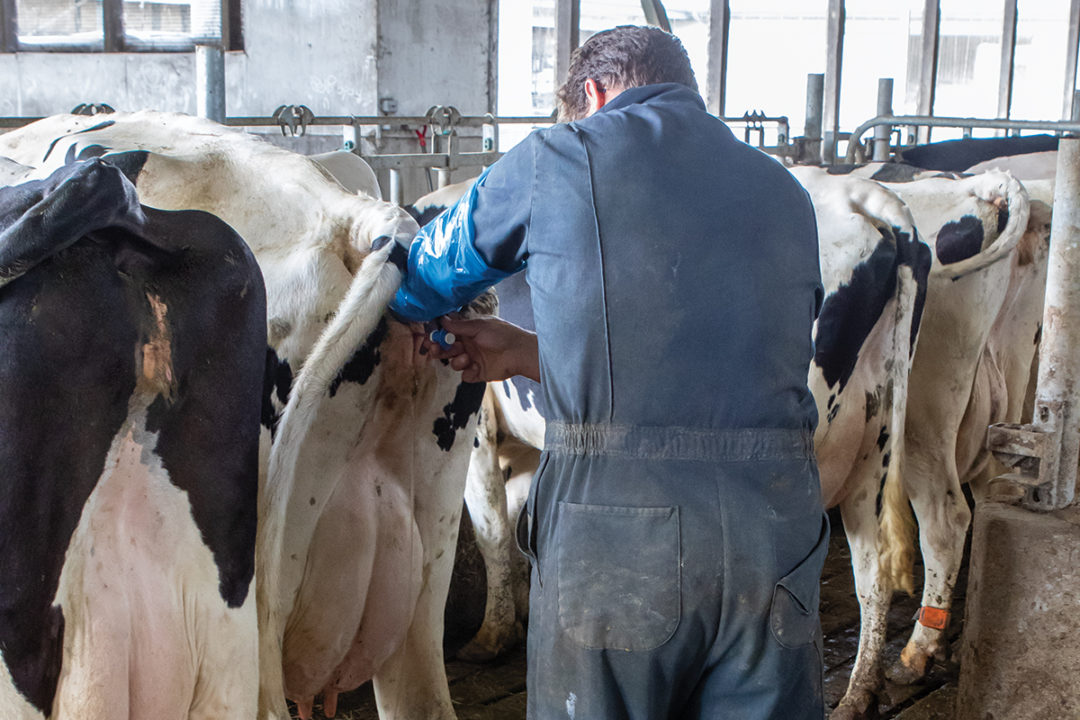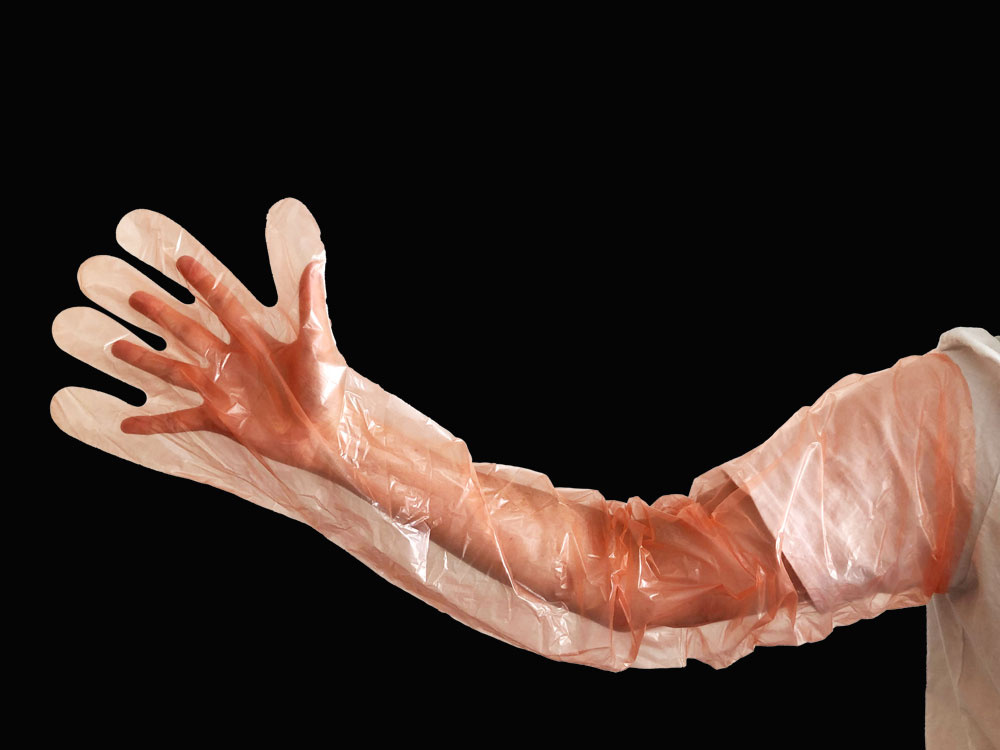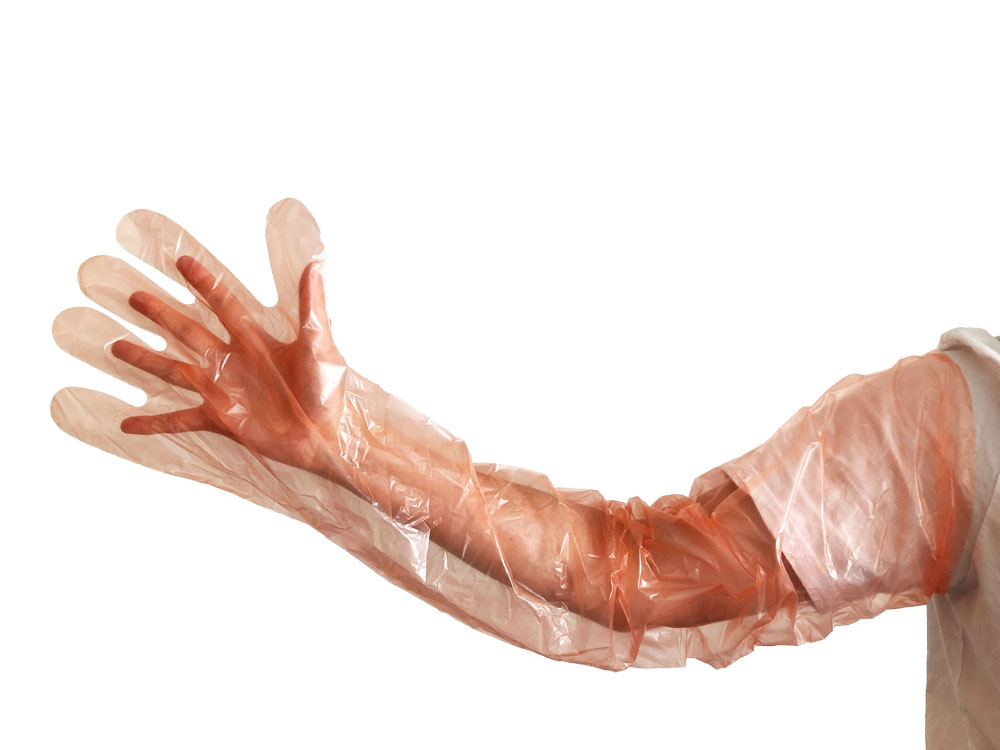Additional information
This shoulder-length disposable glove is used for reproductive procedures such as artificial insemination and pregnancy examinations for bovines.
The technique for depositing semen deep in the body of a cow’s uterus was developed by Danish veterinarians in the late 1930s and its principal innovation is referred to as “recto-vaginal fixation of the cervix.”
In this procedure, a human inseminator inserts his arm deep into a cow’s rectum and takes hold of her cervix. The inseminator then inserts an insemination rod or “gun” into the cow’s vaginal canal, then through the cervix, and injects semen into the body of the uterus.


Artificial insemination and other invasive procedures such as pregnancy palpations require taking measures to restrain the animal being inseminated. Cows are typically restrained at the neck either in a tie-stall or a locking stanchion or headgate, with a bar across the alley of the stall, that prevents her from moving forward or backing up.

Cows less accustomed to handling, such as those who are permitted to range, require greater restraint in a “breeding chute” or “breeding box”, with a bar placed across the alley of the chute. Ideally, the box will be darkened to prevent a cow from seeing what is behind her.


During the insemination procedure, a cow may attempt to kick when a human pushes his arm into her rectum, but once the hand is inside the rectum, the cow will begin to arch her back so that kicking is anatomically inhibited.
Animal production expert, Richard Battaglia, explains that a cow will exert significant pressure against the arm in an attempt to “expel” it as she tries to “force the cervix [back] toward the vulva.” Battaglia instructs inseminators to persist in the face of this resistance and to not “fear the rectal wall.”
Artificial Insemination in systems of milk extraction
In the early decades of the 21st c., artificial insemination is used by a vast majority of bovine milk extraction operations in the U.S., although just over half of these operations continue to use bulls for “natural service” either alone or in conjunction with A.I.
Artificial insemination is part of the intensive regime of sexual and reproductive compulsion that is at the core of human systems of milk extraction. This is because the milk of the cow that is used as human food is the end product of gestation and birth. Humans make cows produce milk by making cows give birth. As semen extraction representative, Chris Sigurdson, put it, “dairies don’t work unless cows get pregnant when they need to.” To derive a net return from the costs of keeping a cow used for milk extraction, cows must be milked as soon as possible and for as many days as possible. The core business model for milk extraction operations is, as dairy scientist, Stephen LeBlanc, put it, “getting semen into cows and back into cows in a timely way.”
In the early 21st c. in North America, a cow held for milk production is impregnated for the first time at around 15 months of age. She will give birth after 9 months when she is around 2 years of age. Immediately after giving birth, she will be milked by humans or by machines 3 to 5 times a day for around 305 days. 60 to 70 days after giving birth she will undergo human attempts to impregnate her. If she is successfully impregnated, she will be “dried off” approximately 45 to 60 days before giving birth, meaning that humans cease milking her so that her body can prepare for parturition. The “rolling herd average” of cows being milked in the U.S. in this period is around 24,000 lbs. per cow per lactation cycle, a four-fold increase over a period of just over 50 years. This extraordinary level of metabolic output can only be sustained for 2.5 to 3 years, so at around 5 years of age a cow used for milk extraction will be slaughtered for the residual value of her carcass.

